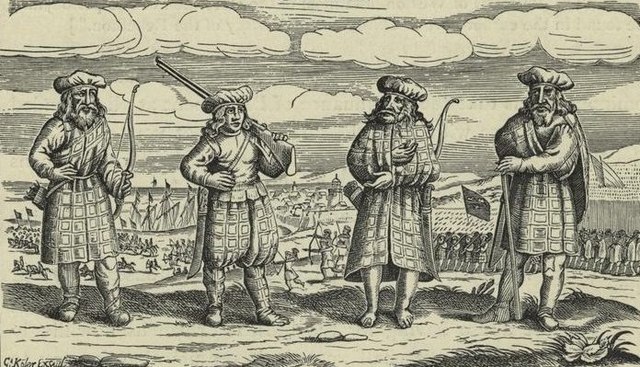The Scottish Gaelic word clann means children. In early times, and possibly even today, Scottish clan members believed themselves to descend from a common ancestor, the founder of the clan, after whom the clan is named. The clan chief is the representative of this founder, and represents the clan. In the Scottish clan system, a chief is greater than a chieftain (ceann-cinnidh), a designation applied to heads of branches of a clan. Scottish clans that no longer have a clan chief are referred to as armigerous clans.
A depiction of the Clan Forbes clan chief illustrated by R. R. McIan, from James Logan's The Clans of the Scottish Highlands, 1845
A Scottish clan is a kinship group among the Scottish people. Clans give a sense of shared heritage and descent to members, and in modern times have an official structure recognised by the Court of the Lord Lyon, which regulates Scottish heraldry and coats of arms. Most clans have their own tartan patterns, usually dating from the 19th century, which members may incorporate into kilts or other clothing.
A romantic depiction of Highland Chiefs from 1831
Scottish soldiers, identified as of Donald Mackay, 1st Lord Reay's regiment, in service of Gustavus Adolphus (1630–31)
The Battle of Culloden, as depicted in a painting by David Morier. Modern historical thinking gives less importance to this battle as a factor in the demise of clanship.
David Wilkie's 1829 flattering portrait of the kilted King George IV, with lighting chosen to tone down the brightness of his kilt and his knees shown bare, without the pink tights he wore at the event.





